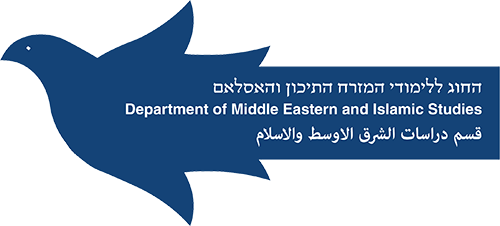Pro. Avner Giladi
Areas of interest and research
Family History, History of Childhood, Gender and Women History in pre-modern Muslim societies; al-Ghazālī’s ethical and educational thought.
Publications
Authored Books
- 1. Children of Islam: Concepts of Childhood in Medieval Muslim Society, London: Macmillan/St Antony’s College Series, 1992.
- Infants, Parents and Wet Nurses: Islamic Views on Breastfeeding and Their Social Implications, Leiden, Boston and Köln: Brill, 1999.
- Muslim Midwives: The Craft of Birthing in the Premodern MiddleEast, New York: Cambridge University Press, 2015 (first paperback edition, 2017).
A Collective Book
- H. Benkheira, A. Giladi, C. Mayeur-Jaouen et J. Sublet,La famille en Islam d’après les sources arabes, Paris: Les Indes Savantes, 2013 (author of chapters V, VI).
An Edited Book
Sub-editor of Children and Childhood in World Religions, edited by D. Browning and M. Bunge, Piscataway NJ: Rutgers University Press, 2009 (author of Chapter 3) (first paperback edition, 2011).
A Selection of Articles
- “Some Notes onTahnikin Medieval Islam”, Journal of Near Eastern Studies
47 (1988), pp. 175-179.
- “Concepts of Childhood and Attitudes towards Children in Medieval Islam: A Preliminary Study with Special Reference to Reactions to Infant and Child Mortality”,Journal of the Economic and Social History of the Orient32 (1989), pp. 121-152.
- “On Two Key-Terms in al-Ghazali’sIhya Ulum al-Din”,Arabica 36 (1989), pp. 81-92.
- “Ṣabr(Steadfastness) of Bereaved Parents: A Motif in Medieval Muslim Consolation Treatises and its Origins”,Jewish Quarterly Review 80 (1989), pp. 35-48.
- “Some Observations on Infanticide in Medieval Muslim Society”,International
Journal of Middle Eastern Studies 22 (1990), pp. 185-200.
- “Infants, Children and Death in Medieval Muslim Society: Some Preliminary Observations”,Social History of Medicine3 (1990), pp. 345-368.
- “‘The child was small… not so the grief for him’: Sources, Structure and Content of al-Sakhawi’s Consolation Treatise for Bereaved Parents”,Poetics Today14 (1993), pp. 367-386.
- “‘Their Fragrance is the Fragrance of Heaven’: On Children, Parents and Society in the Muslim Middle East during the Middle Ages”,Zmanim53 (1995), pp. 78-87 (Hebrew).
- “Islamic Consolation Treatises for Bereaved Parents: Some Bibliographical Notes”,Studia Islamica81 (1995), pp. 197-202.
- “Gender Differences in Child Rearing and Education: Some Observations with
Reference to Medieval Muslim Thought”, Al-Qantara (Madrid) 16 (1995), pp. 291-308.
- “ThreeFatawaon ‘Lending Libraries’ in North Africa and Spain”, Arabica 44 (1997), pp. 140-143.
- “Normative Islam versus Local Tradition: The Case of Female Circumcision with Special Reference to Egypt”,ArabicaXLIV (1997), pp. 254-267.
- “Breast-Feeding in Medieval Islamic Thought: A Preliminary Study of Legal and Medical Writings,”Journal of Family History23 (1998), pp. 107-123.
- “Individualism and Conformity in Medieval Islamic Educational Thought: Some Notes with Special References to Elementary Education”,Al-Qantara26 (2005), pp. 99-121.
- “History and Emotions: On Parent-Child Relationships in Arabic Islamic Sources”,Historia23 (2009), pp. 23-41 (in Hebrew).
- “Liminal Craft, Exceptional Law: Some Preliminary Notes on Midwives in Medieval Islamic Writings”,International Journal of Middle East Studies 42 (2010), pp. 185-202.
- “Herlihy’s Thesis Re-Visited: Some Notes on ‘Investment’ in Children in Medieval Muslim Societies”,Journal of Family History36 (2011), pp. 235-247.
- “The Plague Tractate and Consolation Treatise by Marʿīb. Yūsuf al-Karmī al-Maqdisī (d. 1033/1624)”,Al-Qasemi Journal of Islamic Studies 1 (2016), pp. 53-62 (in Arabic).
- “Some Notes on the Qur’anic Concepts of Childhood”, in K. Kreiser and F. Georgeon (eds),Childhood and Youth in the Muslim World, Paris: Maisonneuve & Larose, 2007.
- “Islam”, in Don Browning and Marcia Bunge (eds.),Children and Childhood in World Religions,New Brunswick, New Jersey and London: Rutgers University Press, 2009, pp. 151-216.
- « Toutes les femmes d’al-Sakhāwī : quelques remarques surKitāb al-nisā’(‘ Le Livre des femmes’), comme source de ‘l’Histoire intime’ des sociétés musulmanes médiévale », in Christian Müller et Muriel Roiland-Rouabah (eds), Les non-dits du nom. Onomastique et documents en terres d’Islam. Mélanges offerts à Jacqueline Sublet, Beirut: Institut Français du Proche Orient, 2013, pp. 547-566.
- “Les enfants qu’ils étaient : Les récits d’enfances merveilleuses comme source historique”,in Catherine Mayeur-Jaouen and Alexandre Papas (eds.),Portrait of Family with Saints: Hagiography, Sanctity and family in the Muslim World, Berlin: Klaus Schwartz, 2014.
- “Sex, Marriage and the Family in al-Ghazālī‘s Thought: Some Preliminary Notes”, in Georges Tamer (ed.),Islam and Rationality: The Impact of al-Ghazālī,Leiden: Brill, 2015, pp. 165-185.
- “Reactions to the death of infant and children in premodern Muslim societies: Children in MarʿīIbn Yūsuf’s plague and consolation treatises”, in Reidar Aasgaard and Cornelia Horn with Oana Maria Cojocaru (eds.),Childhood in History: Perceptions of Children in the Ancient and Medieval Worlds, London and New York: Routledge, 2018, pp. 305-317.
Entries in Professional Encyclopedias
- “Ṣaghīr” [“Minor”],The Encyclopaedia of Islam, New edition, vol. V, pp. 821-827.
- “Children”,Encyclopedia of the Qur’an,I, pp. 301-303;
- “Family”,Encyclopedia of the Qur’an,II, pp. 173-176;
- “Fosterage”Encyclopedia of the Qur’an,II, pp.266-267;
- “Guardianship”Encyclopedia of the Qur’an,II, pp.373-375;
- “Lactation”,Encyclopedia of the Qur’anIII, pp. 106-107;
- “Orphans”,Encyclopedia of the Qur’anIII, pp. 603-604;
- “Parents”,Encyclopedia of the Qur’anIV, pp. 20-22;
- “Wet-Nursing”,Encyclopedia of the Qur’anV, pp. 476-478;
- “Milk Kinship: Overview”,Encyclopedia of Women and Islamic CulturesII, pp. 355-357.
- “Birth Control”,The Encyclopaedia of IslamThird Edition, vol. 4 (2009), pp. 108-113.
- “Motherhood”,The Oxford Encyclopedia of Islam and Women,2013.
- “Midwives”,The Oxford Encyclopedia of Islam and Women,2013.
- “Ḥalīma bint AbīDhuʾayb”,The Encyclopaedia of Islam, Third Edition, Part 2020-5 (online), pp. 49-52.
Contact
Email: agiladi@research.haifa.ac.il


